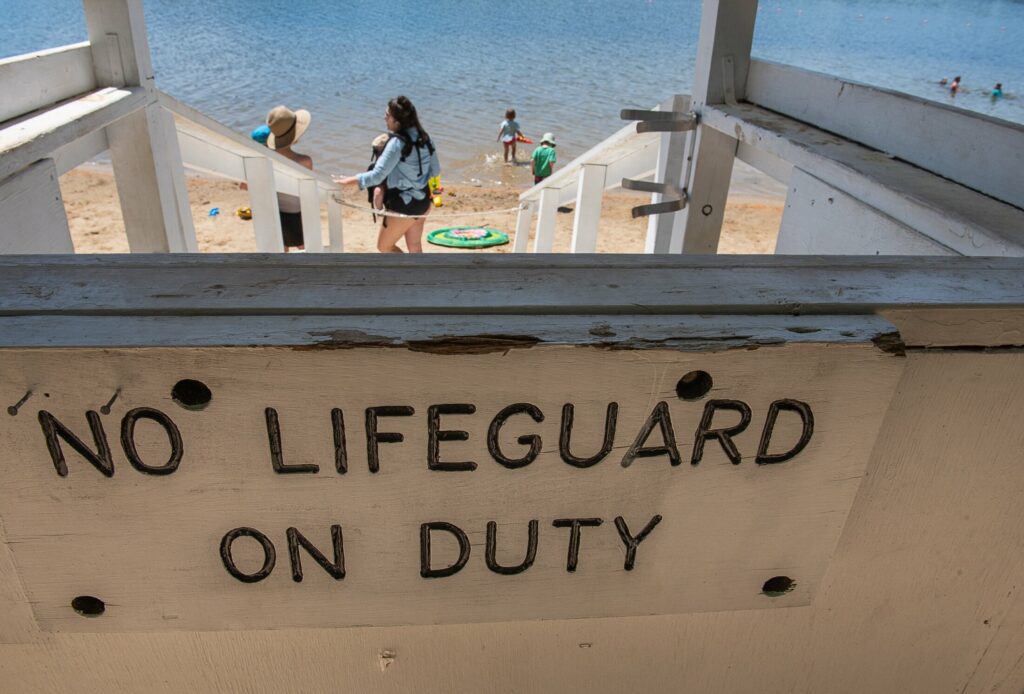
Parents keep a vigil as their children play in the water at Range Pond State Park in Poland Monday morning. Range is one of nine Maine State Parks that the state said it was trying to hire lifeguards for earlier this month. It also raised starting pay 25% to $14.71 for lifeguards hoping to attract more applicants. "Staffing is ongoing, so things can change throughout the season," spokesman Jim Britt said Monday. "Parks will notify customers when no lifeguard is present."
A recent surge in drowning incidents in Maine has raised serious concerns about water safety across the state. Reports indicate that between May and July 2023, at least 12 individuals lost their lives in various swimming-related accidents. This alarming trend highlights the critical need for improved water safety measures to protect residents and visitors.
The National Safety Council states that drowning is a leading cause of accidental death, particularly among children and young adults. With the summer season drawing families to lakes, rivers, and ocean beaches, the risks become even more pronounced. Local authorities are now facing mounting pressure to implement comprehensive safety protocols to prevent further tragedies.
Calls for Action from Water Safety Advocates
Advocates for water safety emphasize the importance of education and prevention strategies. They argue that awareness campaigns could significantly reduce the number of drownings. “We need to ensure that everyone understands the risks associated with swimming in open water,” said Sarah Thompson, a representative from Maine’s Water Safety Coalition. “Knowledge is the first line of defense.”
In response to the rising fatalities, local governments are beginning to explore partnerships with water safety organizations. Initiatives may include enhanced lifeguard training, mandatory safety courses for young swimmers, and increased funding for public awareness campaigns. Such measures aim to foster a culture of safety that goes beyond mere compliance.
In addition to educational efforts, there is a pressing need for infrastructure improvements. Many popular swimming areas lack essential safety equipment, such as life rings and clear signage indicating safe swimming zones. The lack of resources can hinder rescue efforts and increase the risk for swimmers.
Community Response and Future Initiatives
The community’s response to the recent drownings has been one of solidarity and urgency. Town meetings are being held to address the issue and gather input from residents. Parents, educators, and local leaders are joining forces to create a strategic plan that includes both immediate actions and long-term solutions.
In light of these discussions, local authorities are considering the implementation of regular safety inspections of swimming areas. This would ensure that facilities meet safety standards and are adequately equipped to handle emergencies. Furthermore, they are looking into collaboration with schools to integrate water safety education into the curriculum, targeting children at a young age.
As Maine grapples with these challenges, it is clear that proactive measures are essential to safeguard lives. The tragic drownings serve as a stark reminder of the vulnerabilities associated with water activities. By prioritizing safety and community engagement, Maine can work towards reducing these incidents and fostering a safer environment for all.
The responsibility to enhance water safety lies not only with local authorities but also with individuals and families. Everyone must take an active role in understanding the importance of water safety measures. Only through collective effort can Maine hope to prevent future tragedies and ensure that its beautiful waterways remain safe for enjoyment.







